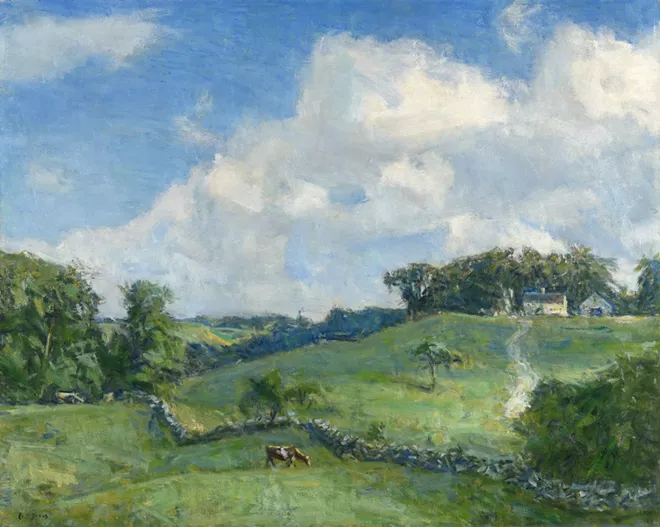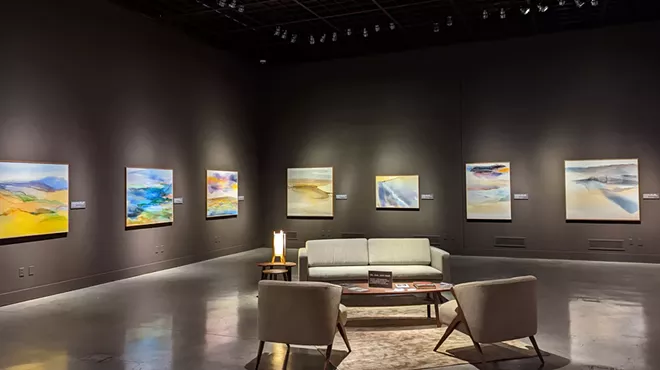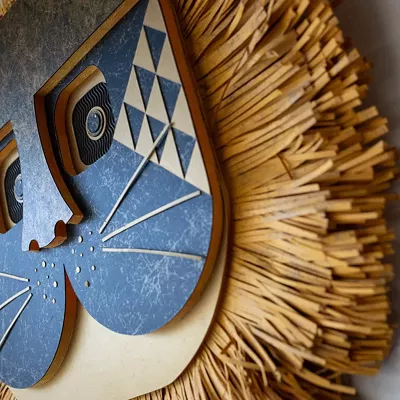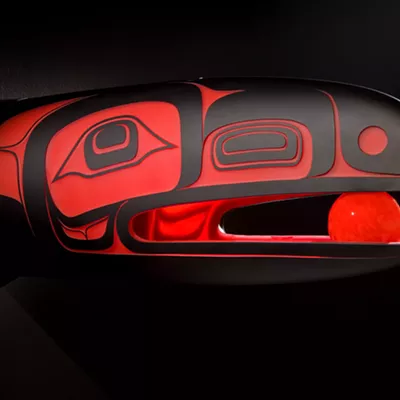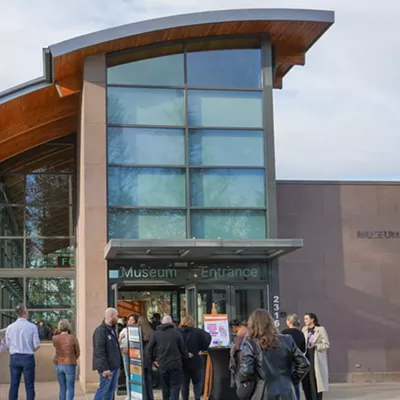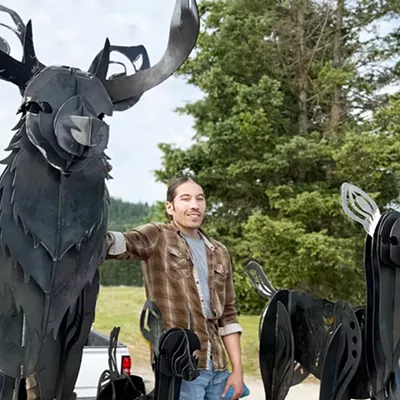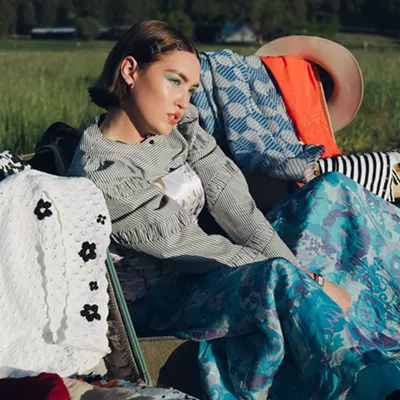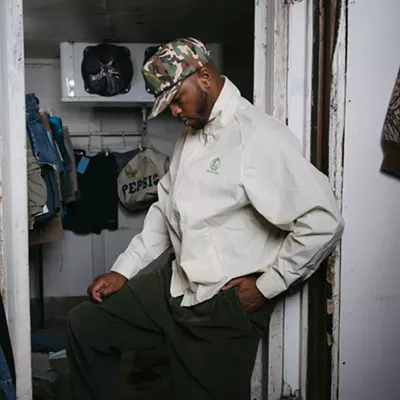There's magic in seeing art up close and in person.
Few forms conjure this sensation as remarkably, perhaps, as impressionist paintings. Such chameleons of color, shadow, shape and texture shift before the eyes in the Northwest Museum of Arts and Culture's headlining fall 2022 exhibition, "American Impressionism: Treasures from the Daywood Collection."
Take John Edward Costigan's "Woman, Boy and Goats," a pastoral winter scene softly lit by receding afternoon sunshine. Observe the 36-by-40-inch painting from afar, and the ice-enrobed trees and snowy creek bank seem, somehow, to sparkle. Light and shadows dance across the canvas.
Step closer. As each brushstroke begins to sharpen, you begin to notice an unexpected roughness in the leafless branches. Lean in a little further (but don't get too close). Those shadows in the tree branches don't look like shadows at all now. They're smears and even hardened shards of 100-year-old oil paint. Zoomed in, these feathery strokes and streaks of yellow, vermillion, indigo, soft pink and the cleanest white lose all former representation as twigs and snow and sunlight.
"Woman, Boy and Goats" is one of 41 impressionist paintings featured in the exhibit, on loan from the Huntington Museum of Art in Huntington, West Virginia.
The collection's Spokane stop was yet another COVID-caused delay, says Kayla Tackett, the museum's director of exhibitions and collections. Originally scheduled for 2020, it's now finally on display alongside five other exhibitions this fall, and takes center stage in the museum's large, central gallery.
"Part of the appeal in bringing this exhibition here is that the MAC has a small collection of impressionism, but not much," Tackett says. "So this is a really great opportunity to bring that movement to Spokane so people can experience it. And, it's important to see the accomplishments of American impressionists."
While many of us can recall some of the impressionist movement's best-known European players — Van Gogh, Monet, Renoir, Degas, Manet, Matisse and others — their American contemporaries are less familiar to the wider public.
"The Americans were just as skilled painters, and also doing interesting things," Tackett says.
The impressionist movement was harshly criticized when it first emerged in France in the 1870s (the style takes its name from Claude Monet's "Impression, Sunrise"). But artists and collectors soon grew to embrace impressionism, which centrally rejected painting's academic, structured rules prescribed by the Old Masters.
Impressionism is largely characterized by loose, visible brushstrokes, occasional use of bright, unblended colors, and emphasis on depicting the interplay of light and movement. Its early adherents also focused on more ordinary subject matters and scenery such as natural landscapes and domestic life. Many paintings were completed entirely outdoors, or en plein air.
More than a century later, impressionism remains widely popular amongst modern artists, art enthusiasts and collectors.
"Some of that has to do with the skill of the painter," Tackett says. "I think there is something interesting for our brains about capturing the way a landscape feels, even though your brain goes, 'Well, that's not what it really looks like.' It's something about being able to capture the light and movement and brush strokes that are not photorealistic, but an impression of space and a feeling."
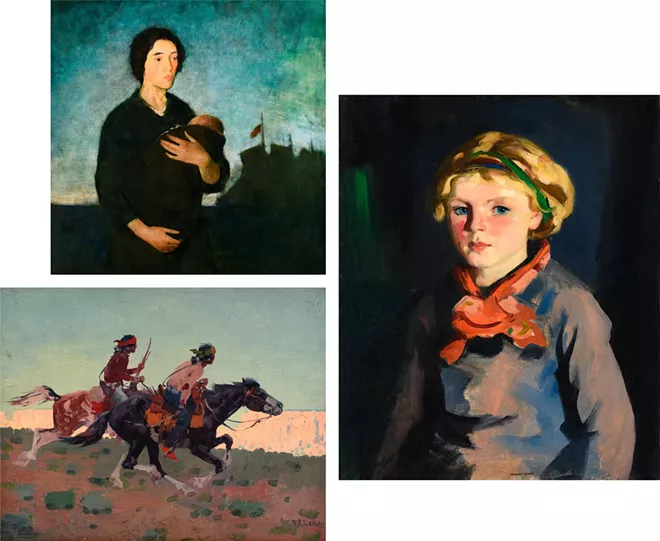
Among the artists featured in the Daywood Collection are works by John Twachtman, John Sloan, George Inness, William Merritt Chase, J. Alden Weir and Robert Henri. All of the included artists' subjects range from landscapes to still lifes to portraits.
"A lot of the artists in this exhibition studied in Europe, and so they were inspired by European impressionism," Tackett says. "What you'll notice in a lot of the pieces in the show is that they apply that technique to the American landscape, from the East Coast all the way out to the Southwest."
The Daywood Collection was acquired from the 1920s to the 1940s by West Virginia arts patrons Arthur Spencer Dayton and Ruth Woods Dayton. Its name comes from combining his last name with her maiden name. The Daytons' interest in impressionism began after they were gifted a painting for their 1916 wedding. That piece, "Munich Landscape" by Ross Sterling Turner, is featured in the exhibit near one of the gallery's main entrances.
"That painting was the beginning of a collection that eventually grew to over 200 works," Tackett says.
The 41 paintings in "American Impressionism" date from 1861 to the late 1930s, a period of change and upheaval in American and global history, including the Industrial Revolution, World War I and the Great Depression. Impressionism was at its height in the U.S. for about two decades, between the 1890s and 1910s, before the emergence of the modern art movement.
The Daytons were both raised in prominent, upper-class families, Tackett says, and acquired art from a variety of sources: dealers, auctions, exhibitions and, sometimes, directly from the artists they admired.
Ruth Dayton donated their entire collection to the Huntington Art Museum in 1967. The selections now hanging at the MAC have been touring the U.S. since 2019, and Spokane is the second-to-last stop on that tour before the art returns home.
On display through Jan. 8, 2023
While most of the paintings are landscapes, the settings are as diverse as each artist's individual technique within the realm of the impressionist style. Smaller, snow-covered countrysides in muted hues of brown are contrasted with massive seascapes of white-capped waves under a cerulean sky, crashing onto a rocky coastline. Other scenes center on quaint seaside dwellings under popcorn clouds, with unexpected undertones of pink or red, yet seamlessly blended within the imagery.
It's been a few years since the MAC has hosted a show consisting solely of noncontemporary, fine art paintings. "Norman Rockwell's America" opened in late 2019 with 22 oil paintings. Other fine art exhibitions since focused on other media, including John James Audubon's original prints and drawings, and Louis Comfort Tiffany's glass.
"I always think of it as, we want to send things out on loan from the MAC, and that's bringing them back to the world," Tackett says. "And then when we bring things in — that's bringing the world to the MAC." ♦

